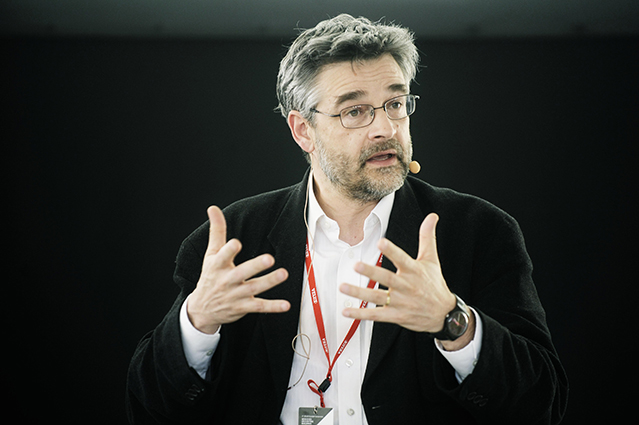
Martine Knoop is Lecturer at the Chair of Lighting Technology, Technische Universität Berlin, Germany. After studying architecture and building physics at Delft University of Technology, she finalized her PhD in 2000, dealing with glare from windows and acceptance studies in daylit rooms. Before TU Berlin, she was a senior application specialist of Philips Lighting, the Netherlands and part-time visiting professor at Eindhoven University of Technology. She is also the Division Secretary of CIE Division 3 – Interior Environment and Lighting Design.
Koen Steemers is professor of Sustainable Design in the Department of Architecture, Cambridge University. Previously he was director of the Martin Centre for Architectural and Urban Studies (2003-08), and today also Director of Cambridge Architectural Research Ltd. As an architect and environmental design specialist, Koen Steemer’s current work deals with the architectural and urban implications of environmental issues.
Dr. Richard Hobday is an authority on sunlight therapy and solar design for health. He is an independent consultant, and his work and research history bridges gaps between several disciplines. These include mechanical engineering, sustainable design, town planning, infection control, and public health. He is the author of The Healing Sun: Sunlight and Health in the 21st Century (Findhorn Press, 1999), a critically acclaimed book on the health benefits of solar radiation. His most recent book The Light Revolution; Health Architecture and the Sun (Findhorn Press, 2006), explains how designing for sunlight can improve public health.
Deborah Burnett, ASID, CMG, LGC, AASM is an award winning internationally recognized registered interior designer, licensed general contractor, keynote presenter and member of the American Academy of Sleep Medicine. Over a successful 30 year professional career, her practice has emerged as a leader in the embodiment of intent-driven, evidence-based architectural and interior design devoted to a working knowledge of how the body and brain are directly affected by the built environment. An early pioneer in the emerging practice of EPIGENETIC DESIGN, she has been instrumental in disseminating important scientific and medical research examining the impact of built environmental ambient lighting on the process of sleep, cognition and obesity. In addition to consulting on projects throughout the world, Ms. Burnett’s work includes clinical and academic research, public education and outreach, academic lectures, and presentations in the popular media.
Philip Allsopp RIBA, FRSA, is a writer, speaker and activist directly involved for many years in shaping the policies and physical environments that encourage active living, economic diversity and greater community resilience. Phil Allsopp has a professional and academic background in the fields of architecture, public health and systems dynamics. He is the co-founder of Transpolis Global, a multi-disciplinary organisation combining urban design, architecture, public policy and community advocacy, with clients in the USA, EU and Australia. Phil serves on Phoenix Mayor Greg Stanton’s Sustainability Advisory Committee, the Board of the Sonoran Institute, and is the immediate past President and Chief Executive Officer of the Frank Lloyd Wright Foundation, based at Taliesin West in Scottsdale, Arizona. Allsopp’s main fields of interest are human habitat, public health and public policy, particularly the connections between our built environment health and well-being.



